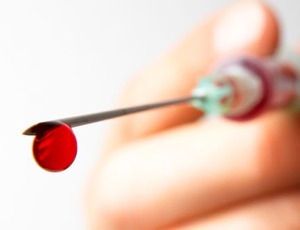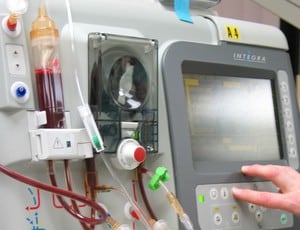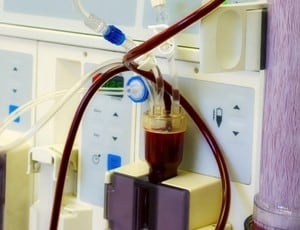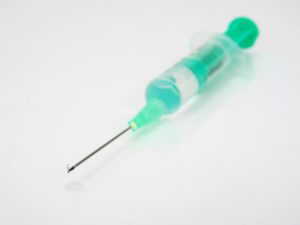Conference on the safety of intravenous drug delivery systems

The Third Consensus Conference on the Safety of Intravenous Drug Delivery Systems was convened to evaluate the benefits and risks of available systems and assess ongoing threats to the safety of intravenous drug delivery” Gabay et al (2019). Abstract: PURPOSE: The Third Consensus Conference on the Safety of Intravenous Drug Delivery Systems was convened to […]
Influence of arm position change on ECG PICC tip location

The aim of this study is to evaluate the influence of arm movements from adduction to abduction on intracavitary electrocardiogram and the position of a catheter tip” Zhu et al (2019). Abstract: PURPOSE: The aim of this study is to evaluate the influence of arm movements from adduction to abduction on intracavitary electrocardiogram and the […]
Postexposure prophylaxis following needlestick injury

Occupational exposures following needlestick injuries are far from being uncommon and require a standardised approach in counselling the respective healthcare worker” Strobel and Eis (2019). Abstract: Occupational exposures following needlestick injuries are far from being uncommon and require a standardised approach in counselling the respective healthcare worker. In addition, non-occupational exposures likewise cause consultations of […]
Totally implantable central venous port complications

To analyze postoperative complications of totally implantable central venous port system (TIPCVP) deployment and develop methods of their prevention” Smolyar et al (2019). Abstract: OBJECTIVE: To analyze postoperative complications of totally implantable central venous port system (TIPCVP) deployment and develop methods of their prevention. MATERIAL AND METHODS: The study involved 43 patients who underwent TIPCVP […]
The clinical performance of midline catheters

The median dwell time of the midline catheters was 8 days with substantial variation whereas the incidence for premature catheter removal was 71.8/1000 catheter days. The majority of midline catheters were removed prematurely” Bundgaard Madsen et al (2019). Abstract: BACKGROUND: The use of peripheral venous catheters is hampered by short dwell time and central venous […]
Assessing the quality of life in patients with vascular access

A well-functioning vascular access (VA) and the absence of complications are certainly associated with better health in patients on dialysis but unfortunately VA-related perceived HRQoL has so far been a subject of little interesting literature” Colturi et al (2019). Abstract: Patients undergoing haemodialytic treatment have a lower quality of life than the general population because […]
How to prevent legal disputes with central line positioning

The use of ultrasound during central venous catheter placement has significantly reduced the number of complications” Fiorini and Granata (2019). Abstract: Central venous catheterization is a procedure frequently performed in daily clinical practice. The use of ultrasound during central venous catheter placement has significantly reduced the number of complications. However, while the outcome of the […]
What is the impact of air bubbles in infusion tubing

However, even modest amounts of air can cause pulmonary vasoconstriction, right ventricular outflow tract obstruction, myocardial ischemia and even complete cardiovascular collapse” Bulsara et al (2019). Extract: The introduction of air into the arterial or venous circulatory system has been associated with devastating consequences. Yet, routine infusion of small amounts of air seems to be […]
Effect of small volume vacuum phlebotomy tubes on anaemia

We aimed to determine whether low volume blood sampling using SVTs for routine diagnostic purposes translates to decreased fall in haemoglobin concentration, and examine downstream effects on anaemia and need for transfusion during ICU admission” Briggs et al (2019). Abstract: BACKGROUND: Patients admitted to intensive care units (ICUs) undergo multiple blood tests. Small volume vacuum […]
Injection and infusion technology for MRI use

In this paper, the development of a highly portable, lightweight, and MRI-compatible pump system is explained” Kalmar et al (2019). Abstract: INTRODUCTION: Contrast media injections, infusions, or experiments that require a constant volume flow close to or within a very high magnetic field like in magnetic resonance imaging (MRI) require a liquid reservoir and a […]
Complications associated with totally implantable venous access port

“The aim of the study is to elucidate the characteristics and risk factors of late complications associated with TIVAP implantation via the IJV” Tsuruta et al (2019).
Comparison of in-suite versus portable tunneled femoral central line placement

Compare the cost of placing tunneled femoral central lines in the interventional radiology suite to portable bedside placement using time-driven activity-based costing” Hayatghaibi et al (2019). Abstract: OBJECTIVE: Compare the cost of placing tunneled femoral central lines in the interventional radiology suite to portable bedside placement using time-driven activity-based costing. METHODS: Detailed process maps were […]
Intraosseous administration of 4-factor prothrombin complex concentrate

We describe a case of a 69-year-old female receiving oral apixaban that was successfully administered 4F-PCC using intraosseous access prior to emergent surgery to obtain haemostasis intraoperatively” Ratliff et al (2019). Abstract: WHAT IS KNOWN AND OBJECTIVE: The 4-factor prothrombin complex concentrate (4F-PCC) may be used to emergently achieve haemostasis in patients on anticoagulation prior […]
Safety of phenylephrine administration through peripheral IV catheters

Protocol-driven peripheral administration of lower concentration phenylephrine in an ICU setting is safe and feasible” Ballieu et al (2019). Abstract: BACKGROUND/OBJECTIVE: Blood pressure optimization and maintenance of cerebral and spinal perfusion pressure are mainstays in the treatment of a neurocritically ill patient. Traditionally, central venous access has been required for vasopressor administration, with risk of […]
Effects of patient age on patency of hemodialysis vascular access

In this single-center, retrospective observational study, we assessed the long-term patency of vascular access (VA) after first VA placement to uncover independent risk factors associated with VA patency in Asian hemodialysis (HD) patients stratified by age” Jeong et al (2019). Abstract: BACKGROUND: In this single-center, retrospective observational study, we assessed the long-term patency of vascular […]
Study of intravenous infusion safety in English hospitals

Some behaviours that may be considered deviations from policy or best practice are the result of reasoned clinical judgement to improve infusion safety in response to the specific situation at hand” Vos et al (2019). Abstract: BACKGROUND: Deviations from local policy and national recommended best practice are common in the administration of intravenous infusions, but […]
Vancomycin compatibility with parenteral nutrition admixtures

The present study aimed to determine the compatibility between vancomycin (VMC) and five ready-to-use PN admixtures utilized worldwide (Kabiven, Nutriflex Lipid Special, Olimel N9E, Nutriflex Omega Special, and Smofkabiven) in order to assess the possibility of their co-administration via Y-sites” Stawny et al 92019). Abstract: BACKGROUND & AIMS: A co-infusion of parenteral nutrition (PN) and […]
Ultrasound-based simulation for cannulation in outpatient hemodialysis units

This article details an educational protocol including hands-on simulation for training dialysis technicians and nurses in ultrasound-guided cannulation techniques” Niyyar (2019). Abstract: Portable ultrasounds are often referred to as the “new stethoscope.” Their portability and affordability have led to improved diagnostic capabilities at the point of care in virtually every field of medicine, and hemodialysis […]
Clinical outcomes among elderly patients undergoing hemodialysis

We evaluated the impact of comorbidity burden on the association between vascular access type and mortality risk among 23,100 hemodialysis patients aged ≥65 years from the Korean Society of Nephrology End-Stage Renal Disease registry data” Jhee et al (2019). Abstract: The optimal vascular access type for elderly hemodialysis patients is controversial. We evaluated the impact […]
Virtual reality during pediatric vascular access

Vascular access is a minor procedure that is associated with reported pain and fear in pediatric patients, often resulting in procedural incompliance. Virtual reality has been shown to be effective in adult populations for reducing pain and anxiety in various medical settings, although large studies are lacking in pediatrics” Caruso et al 92019). Abstract: BACKGROUND: […]
Lean methodology and central line dressing kits

Since supplies was noted as the number one concern, the team worked to create all-inclusive central line dressing kits” Jake Yaglowski (2020). Abstract: A team of the frontline nursing staff was assembled to work on central line-associated bloodstream infections (CLABSIs). This team used Lean methodology to identify issues related to central line care and maintenance […]
Intracavitary electrocardiogram-guided PICC placement in premature infants

The objective was to evaluate the effectiveness and safety of intracavitary electrocardiogram (IC-ECG)-guided peripherally inserted central catheter (PICC) placement and tip positioning in premature infants” Xiao et al (2019). Abstract: This pre-post intervention study was conducted in Neonatal Intensive Care Units in two Chinese hospitals. The objective was to evaluate the effectiveness and safety of […]
Central venous access device complications with parenteral nutrition

The results showed that patients receiving PN through CVADs within general ward settings experience CRBSI at rates no different from those reported within critical care settings” Martincich et al (2019). Abstract: BACKGROUND: Central venous access devices (CVADs) are used widely in acute clinical settings for the infusion of parenteral nutrition (PN) in patients who are […]
Antibiotic administration practices involving patients with sepsis

To find out whether any common practice exists for intravenous antibiotic administration in critical care units across UK NHS Trusts, and identify factors influencing the adoption of extended or continuous infusions” Barton et al (2019). Abstract: Background: Alternative administration methods are emerging as a key area of research to improve clinical efficacy of antibiotics and […]
Considerations for vascular access polymer coating embolism

Lubricious polymer coatings are increasingly used on intravascular devices to facilitate easier access and navigation through tortuous blood vessels. Recent reports highlight the separation and downstream embolism of polymer particles affecting the vasculature and various organs” Chopra (2019). Abstract: Lubricious polymer coatings are increasingly used on intravascular devices to facilitate easier access and navigation through […]
Prospective randomized controlled trial of needlefee connectors and CRBSI

Needle-free connectors (NFC) have been suggested to reduce the rate of bacterial contamination and subsequent catheter-related bloodstream infection (CRBSI), but data remains ambiguous. Thus, we tested if a novel NFC would reduce bacterial contamination and subsequent CRBSI” Koeppen et al ( 20190. Abstract: BACKGROUND: In the critically ill, catheter-related bloodstream infection can result from bacterial […]
Trisodium citrate central catheter lock solution reviewed

The use of low concentration citrate as catheter lock was cost-effective when compared with heparin” Jayaprakash et al (2019). Abstract: INTRODUCTION: Unfractionated heparin is the commonly used catheter lock solution in patients with temporary dialysis catheters as hemodialysis access. The effectiveness of trisodium citrate as an alternate catheter lock agent has not been studied in […]
Implantation strategy for totally implantable venous access ports

A primary open strategy by cut-down of the cephalic vein, if necessary enhanced by a modified Seldinger technique, reduces the frequency of pneumothorax or haemothorax after central venous port implantation significantly compared with a closed strategy by primary puncture of the subclavian vein without routine sonographic guidance” Hüttner et al (2019). Abstract: OBJECTIVES: PORTAS-3 was […]
Literature review of epicutaneo-caval catheters in neonates

The aim of this editorial is to give 10 recommendations that correspond to 10 novelties in the field of epicutaneo-caval catheter: some are already evidence-based and should be introduced in our daily practice now, while others are particularly interesting and deserve further clinical studies” Barone and Pittiruti (2019). Abstract: Epicutaneo-caval catheters have been widely used […]
Catheter-free fistula use in hemodialysis patients

In our study, older patients who underwent a fistula attempt were just as likely as younger patients to achieve catheter-free fistula use, within a similar time frame, and while requiring a similar number of access procedures” Ladak et al (2019). Abstract: BACKGROUND: Clinical practice guidelines recommend arteriovenous fistulas as the preferred form of vascular access […]

